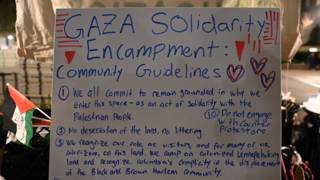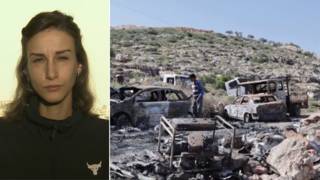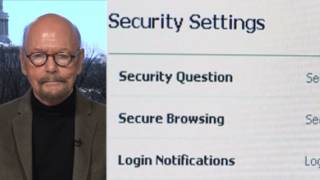
Related
Guests
- Abrahm Lustgarten.investigative reporter at ProPublica.org. His latest article is 'Years of Internal BP Probes Warned that Neglect Could Lead to Accidents'.
The investigative news organization ProPublica is reporting a series of internal BP investigations over the past decade warned senior BP managers that the oil company repeatedly disregarded safety and environmental rules and risked a serious accident if it did not change its ways. The reports described instances in which management flouted safety by neglecting aging equipment, pressured employees not to report problems, and cut short or delayed inspections to reduce production costs. A 2001 internal report noted that BP had neglected key equipment needed for an emergency shutdown, including safety shutoff valves and gas and fire detectors similar to those that could have helped prevent the fire and explosion on the Deepwater Horizon rig in the Gulf. We speak to Abrahm Lustgarten, an investigative reporter at ProPublica. [includes rush transcript]
Transcript
AMY GOODMAN: We’re joined here in New York by ProPublica reporter Abrahm Lustgarten. His latest investigation reports that a series of internal BP investigations over the past decade had warned senior BP managers that the oil company repeatedly disregarded safety and environmental rules and risked a serious accident if it did not change its ways.
Abrahm, welcome to Democracy Now! Explain what you found.
ABRAHM LUSTGARTEN: Well, we thought we’d try to pry back the can a little bit and see what BP had been doing over the years. And through interviews with a number of whistleblowers working particularly in their Alaska operations and then a series of documents that were leaked to ProPublica, we saw that BP has been grappling with internal cultural problems for many years, for eleven that we looked at, going back to 1999. These problems identify a couple of core issues: a lack of accountability among their executives; a lack of ability to hear warnings from their safety inspectors and their maintenance personnel; a pattern of decisions not to upgrade equipment, to run equipment until the last possible moment and eke out the greatest possible profits that they could from that equipment; and a consistent emphasis on production, on profits over safety and environmental compliance.
AMY GOODMAN: This from a country — a company — I confused it with a country, but it actually has a budget larger than most countries in the world.
ABRAHM LUSTGARTEN: Huge.
AMY GOODMAN: So, talking about cost cutting in a company that is making record profits, even for its own record, explain what it hadn’t been doing and exactly where the documents are from.
ABRAHM LUSTGARTEN: Well, first is to describe the pressures a little bit on BP in Alaska, which is where part of what we looked at has taken place. I mean, the Prudhoe Bay oil field is a declining field. There’s been pressure on the company to maintain profits and maintain production in that field as oil production has declined. So, to do that, BP has, for a decade now, been under immense pressure and translated that — transferred that pressure to its employees. They encouraged the skipping of processes like pressure testing of valves that would control leaks both in pipelines and in compressor stations. They seem to have cut short on what they call coupon tests that measure corrosion inside the pipelines, which have been known to leak. They did not upgrade very old safety systems, including gas sensors and fire sensor alarms, which are actually similar to some of the things that failed on the Deepwater Horizon rig in the Gulf. Each of those might cost a hundred — couple hundred thousand dollars or a couple million dollars, but on the whole, they’ve added up to tens of millions of dollars in savings for the company.
AMY GOODMAN: How did you discover all the internal documents?
ABRAHM LUSTGARTEN: Oh, it’s a process of developing sources. Essentially, there were a couple of people who worked up in those fields who contacted us, and through a number of conversations with them, we were put in touch with some people who are very close to BP who felt very strongly that the company — they had been watching for the past decade what the company had been trying to correct and the situation they were trying to rectify up in Alaska and felt that not enough was happening. And slowly they offered a document or two, and with some coaxing, they offered more, until we have three main reports, which are published on our website, and a number of emails and correspondences to back them up that show a bit of the exchange between both federal agencies and BP executives and some of BP’s internal auditors and BP executives.
AMY GOODMAN: Move from Alaska to Texas.
ABRAHM LUSTGARTEN: Yep, in Texas, what we — we know about the 2005 Texas City refinery blast. Fifteen workers died. The plant was started up before it should have been. A tower of refining fuel exploded, and a safety sensor didn’t exist that might have provided an early warning to the blast. Since then, there was both an internal BP study, which was led by former Secretary of State James Baker, which was scathing in its analysis of BP and repeated many of our findings from up in Alaska, as well, that the company had systematically neglected to upgrade its equipment, to maintain its equipment, and OSHA has come in after that blast and after a finding of criminal negligence on BP’s part and found hundreds of additional violations that haven’t been fixed and fined the company some $87 million since 2007 for again failing to fix and upgrade problems that had been identified in years past.
AMY GOODMAN: California?
ABRAHM LUSTGARTEN: California, we looked at the Carson refinery. It was just south of Los Angeles. And the local air quality district that regulates air pollution had actually allowed BP to self-regulate, meaning it allowed the company to check its own tanks on the facilities there and report any problems and fix their own problems, as long as they were in good constant communication with the state. After some time, the state was suspicious, because BP was reporting that they had no problems and that they hadn’t had to do any maintenance. And the state knocked on the door of the Carson refinery and was told to go away and actually had come back with a search warrant before they could come in and conduct their own inspections. When they did, they found 80 percent, 90 percent noncompliance. They found thousands of violations at the BP facilities there, and they sued the company and won more than $100 million in value of their settlement.
AMY GOODMAN: So it’s not just about BP and unsafe practices. It’s about what the government does about it. With this kind of record, it then moves on and gets this offshore oil drilling permit.
ABRAHM LUSTGARTEN: Yeah, absolutely. And while many of the documents and the situations that we uncovered were new to the public, they weren’t necessarily new to the government. And part of what we looked at is that there’s been a push-pull between BP and the Environmental Protection Agency, in particular in Alaska and the state government in California, for many, many years. Part of the document — the origin of the documents that we found were the government’s demand for some sort of plan. I mean, the Environmental Protection Agency negotiated with BP in 2000, came up with a compliance agreement that demanded that the company reform, on all of the points that we’re discussing, and found in subsequent years that it hadn’t. And it kept pushing. And in response to that pressure, BP conducted more internal investigations and more analysis of its own behavior, and those produced the negative reports that we had seen. It looks like the Environmental Protection Agency, in particular, has been trying to figure out for the last eleven years what to do about BP.
AMY GOODMAN: Who has more power, the EPA or BP?
ABRAHM LUSTGARTEN: Well, it’s a curious question. We’ve talked about the subject of debarment, the government’s ability to cut off BP from government contracts. It seems to be the largest point of leverage that the US government has against BP. It’s a difficult proposition, because BP is a major fuel supplier to the military. BP clearly acts as if it has more power, as if it does not have to answer to the US government. I think this is the final test for the Environmental Protection Agency and for the Department of Justice to see if they can find and use that leverage to bring the company under control.
AMY GOODMAN: Abrahm Lustgarten, I want to thank you very much for being here and for your report. He is a reporter for the investigative news website ProPublica.org, has reported on BP for years.












Media Options